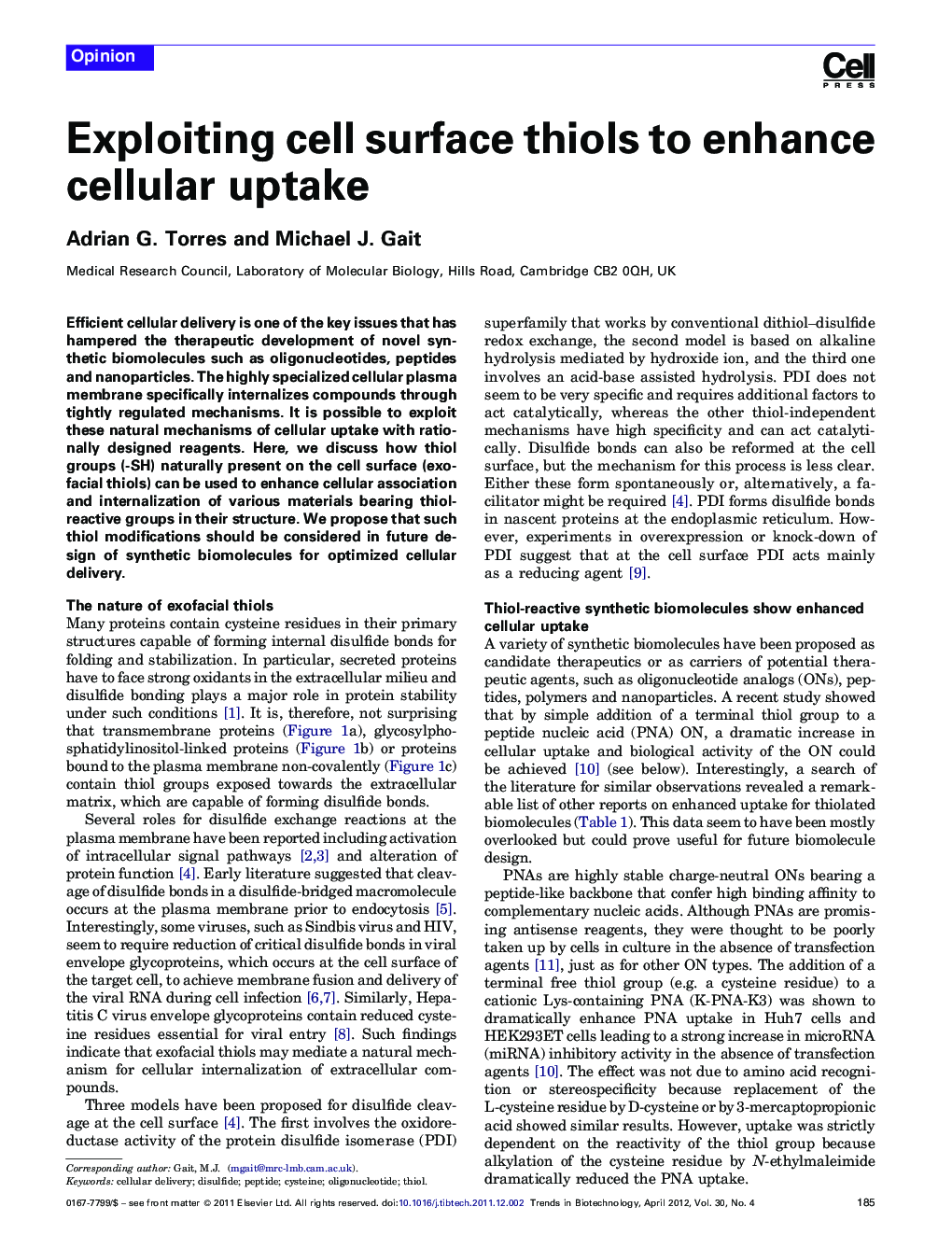| Article ID | Journal | Published Year | Pages | File Type |
|---|---|---|---|---|
| 36948 | Trends in Biotechnology | 2012 | 6 Pages |
Efficient cellular delivery is one of the key issues that has hampered the therapeutic development of novel synthetic biomolecules such as oligonucleotides, peptides and nanoparticles. The highly specialized cellular plasma membrane specifically internalizes compounds through tightly regulated mechanisms. It is possible to exploit these natural mechanisms of cellular uptake with rationally designed reagents. Here, we discuss how thiol groups (-SH) naturally present on the cell surface (exofacial thiols) can be used to enhance cellular association and internalization of various materials bearing thiol-reactive groups in their structure. We propose that such thiol modifications should be considered in future design of synthetic biomolecules for optimized cellular delivery.
